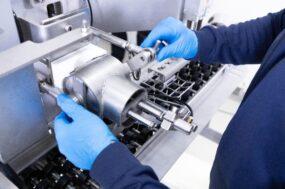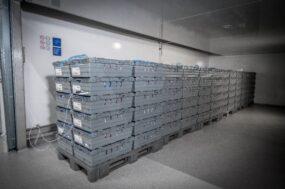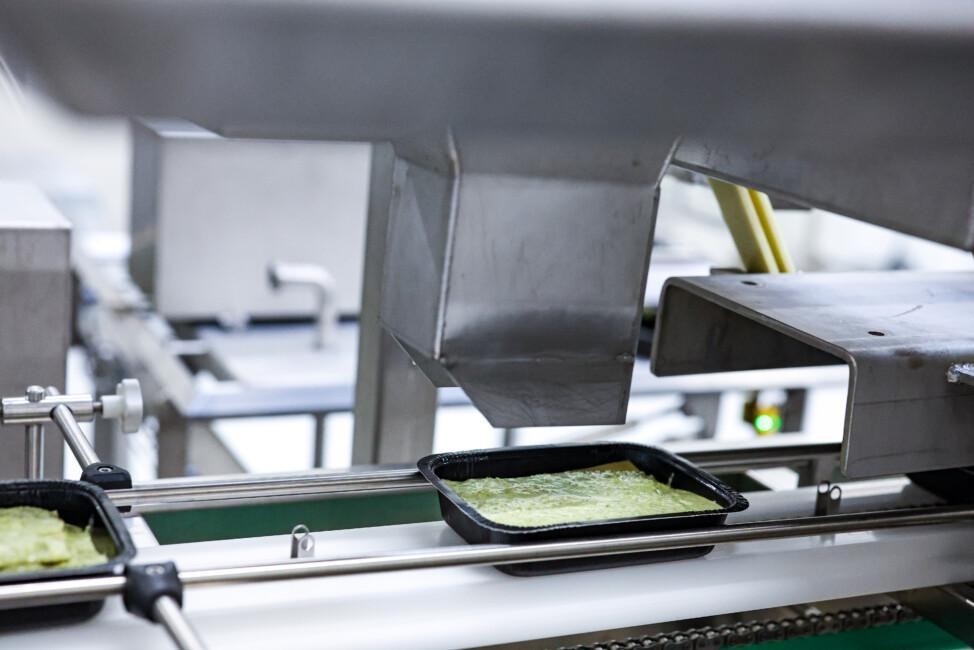
Automatic Dosing Systems for Consistent Quality in Ready Meal Production
Automatic dosing systems keep ready meal production fast, precise, and hygienic. They ensure every portion of pasta, rice, vegetables, or sauce is measured perfectly, reducing waste and keeping quality consistent.
As demand for automation grows, manufacturers rely on these systems to cut labor costs, boost efficiency, and meet strict food safety standards.
Accuracy is key—multi-component meals must look, taste, and feel the same every time. Plus, when seamlessly integrated with tray handling and packaging, production runs smoother than ever.
In this guide, we’ll break down how automatic dosing systems work, their key components, and how to choose the right one.
The Role of Automatic Dosing in Food Manufacturing
Automatic dosing systems ensure precise ingredient portioning in food manufacturing. These systems automate the dispensing of solid and semi-liquid ingredients, maintaining uniformity across production batches.
They integrate with tray handling and packaging lines, creating a seamless workflow that improves efficiency and consistency.
Precise portioning keeps taste, texture, and weight consistent across every meal.
Manual dosing increases the risk of errors, leading to inconsistencies and inefficiencies. Automation eliminates these issues while minimizing ingredient waste by preventing over-portioning.
Precise dosing is essential for meeting EU food safety regulations, such as EU Regulation 852/2004 on food hygiene, which mandates strict control over food handling and processing.
Automated dosing systems reduce contamination risks by ensuring accurate portioning, minimizing human contact, and preventing cross-contamination.
They also help maintain traceability, a key requirement under EU Regulation 178/2002, which requires tracking food components throughout the supply chain.
Automated dosing ensures consistent quality while improving efficiency and reducing waste.
Production efficiency improves with automated dosing. By reducing human intervention, these systems speed up operations and improve reliability. They maintain batch-to-batch consistency, ensuring that every meal meets the same quality standards.
Automation also improves hygiene by minimizing direct contact between workers and food ingredients.
Dosing systems integrate directly with tray filling and sealing equipment, optimizing the production line. They support various tray sizes and materials, including plastic, aluminum, and cardboard, allowing for flexible packaging options.
Advanced PLC-based control systems synchronize dosing with packaging, ensuring precise and efficient operation.
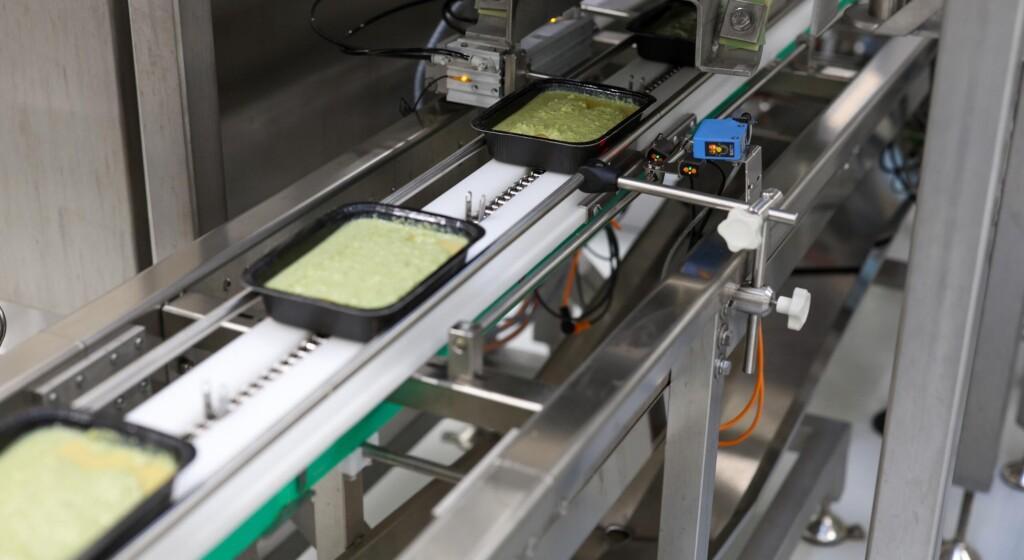
Key Components of an Automatic Dosing System
1. Dosing Mechanisms for Solid and Semi-Liquid Ingredients
Precise dosing of solid and semi-liquid ingredients ensures consistent portion sizes, maintains product quality, and prevents waste. Different dosing mechanisms are required based on ingredient type to achieve accuracy and efficiency.
For solid ingredients like pasta, rice, and vegetables, volumetric dosing systems are commonly used. These systems dispense a fixed volume of product, ensuring uniform portions while maintaining ingredient integrity.
They are ideal for fragile ingredients that could break under excessive pressure.
Semi-liquid ingredients, such as sauces, dressings, and purees, require piston or pump-based dosing. These systems control the amount dispensed by adjusting stroke length or pump speed, ensuring smooth and even distribution.
Proper flow control is important to prevent clogging and maintain consistent portioning, especially for viscous or particulate-laden mixtures.
Some ready meals contain multiple components that have to be dosed simultaneously. Multi-head dosing systems allow different ingredients to be dispensed in precise amounts at the same time, improving production speed and consistency.
These systems also reduce the risk of ingredient separation, ensuring a uniform final product.
Accurate dosing mechanisms prevent ingredient waste while maintaining product quality and consistency.
2. PLC-Based Control Systems for Accuracy and Efficiency
PLC (Programmable Logic Controller) systems form the automation backbone of modern dosing systems, ensuring that every portion meets strict accuracy standards. These controllers regulate multiple dosing parameters, including portioning speed, weight, and ingredient ratios, to maintain consistency across production runs.
A PLC system continuously monitors and adjusts dosing operations in real-time. Sensors detect inconsistencies in ingredient flow, weight deviations, or improper portioning and send feedback to the PLC. The system then makes immediate corrections to prevent waste and maintain uniform quality. This closed-loop control minimizes errors and reduces manual intervention.
Key features of PLC-controlled dosing systems include:
- Real-time monitoring – Operators can track ingredient dispensing, identify issues, and make adjustments instantly.
- Pre-programmed recipe storage – The system allows quick switching between meal variations, reducing downtime.
- Automated feedback loops – Sensors detect errors and trigger corrections without stopping production.
PLC systems ensure dosing precision by continuously adjusting parameters based on real-time data.
3. Integration with Tray Handling and Packaging Lines
Automatic dosing systems have to integrate with tray handling and packaging lines to maintain efficiency. A well-coordinated system ensures accurate ingredient placement, prevents misalignment, and keeps the production line running without interruptions.
To achieve this, dosing systems are designed to work directly with tray handling equipment. They dispense ingredients into trays that are already positioned in the correct location, reducing the risk of spills or uneven distribution.
Synchronization between dosing and tray movement is important to prevent delays or misaligned portions. If trays do not align properly, ingredients might be dispensed inaccurately, leading to waste or inconsistent product quality.
Flexibility is another important factor. Dosing systems have to accommodate trays made from different materials, such as plastic, aluminum, or cardboard. They also need to handle various tray sizes without requiring frequent manual adjustments. This adaptability allows for the production of different meal types without extensive downtime.
Beyond dosing, integration extends to sealing and labeling units.
Once ingredients are placed, trays move seamlessly to the sealing stage, where they are covered to maintain freshness. Labeling systems then apply product information, ensuring compliance with regulatory requirements while improving traceability.
When upgrading equipment, manufacturers often need reassurance that new dosing systems will work with their existing production line. Compatibility between old and new machinery is key to maintaining efficiency.
Modern dosing systems use standardized communication protocols to exchange real-time production data, synchronize tray handling with dosing, and adjust portioning based on system feedback, allowing seamless integration without disrupting operations.
Seamless integration between dosing, tray handling, and packaging ensures consistent quality and operational efficiency.
4. Hygienic Design and Compliance with Food Safety Standards
Automatic dosing systems have to meet strict hygiene requirements, as they handle ingredients that go directly into the final product. Poor sanitation can lead to bacterial buildup, compromising both product quality and consumer health.
To ensure cleanliness and durability, dosing components are typically made from high-quality stainless steel. This material resists corrosion and allows for thorough cleaning, reducing the risk of contamination.
Many systems also feature tool-free disassembly, enabling quick sanitation between production runs. Operators can easily remove and clean components without specialized equipment, minimizing downtime and maintaining consistent hygiene standards.
Compliance with industry regulations is another important factor. Automatic dosing systems should meet standards such as HACCP and ISO 22000, which outline requirements for food safety management.
Many systems incorporate self-cleaning mechanisms to simplify maintenance. Features like automated flushing and CIP (clean-in-place) technology remove residue without manual intervention.
Additionally, minimal contact design reduces the number of surfaces that come into direct contact with ingredients, further lowering the risk of bacterial growth.
Machine structures must also be designed to eliminate holes, gaps, or other areas—such as tire covers—where spills can collect and bacteria may develop. These design improvements further enhance food safety by reducing contamination risks in hard-to-clean areas.
Hygienic design in dosing systems prevents contamination and ensures compliance with food safety regulations.
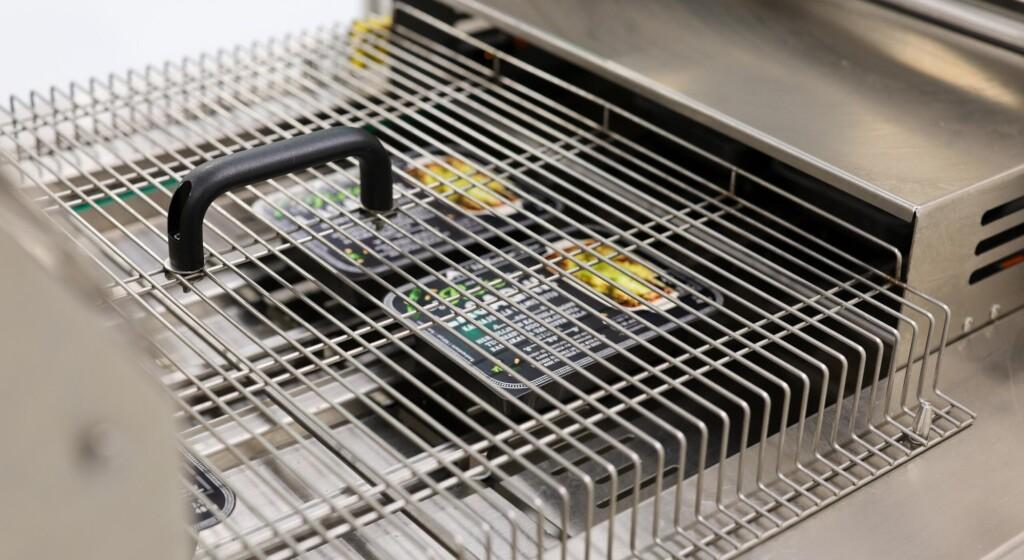
How to Choose the Right System Based on Production Needs
Choosing the right automatic dosing system ensures efficiency, consistency, and food safety in ready meal production. Follow these steps to make the best decision:
- Match the System to Your Ingredients: The system must handle both solid and semi-liquid ingredients with precision. Pasta, rice, and vegetables require gentle dispensers to prevent breakage, while sauces and dressings need precision nozzles to maintain portion accuracy.
- Ensure Seamless Tray & Packaging Integration: A well-integrated system prevents bottlenecks and ensures smooth operation. It should be compatible with different tray materials such as plastic, aluminum, and cardboard, as well as various tray sizes and shapes. Synchronized dosing and sealing functions help maintain proper alignment, ensuring a streamlined production flow.
- Prioritize Accuracy & Waste Reduction: Precision in portioning minimizes waste and guarantees product consistency. A PLC-based automation system reduces variation, while real-time monitoring sensors adjust for density fluctuations. Pre-programmed recipe storage allows for quick transitions between different meal formulations, ensuring efficiency and accuracy.
- Plan for Production Speed & Growth: The system must align with your required output per minute and be scalable for future expansion. A modular system provides flexibility, while multi-head dosing capabilities allow simultaneous portioning of multiple ingredients, increasing throughput without compromising accuracy.
- Choose a Hygienic & Safe Design: Stainless steel components ensure easy cleaning and durability. Tool-free disassembly speeds up sanitation, while self-cleaning features reduce manual intervention. The system should meet food safety standards such as HACCP and ISO 22000 to guarantee compliance.
- Optimize Energy Efficiency & Cost Savings: Energy-efficient systems lower operating costs without sacrificing performance. Features such as energy-saving automation, efficient motor systems, and optimized dosing mechanisms reduce electricity consumption and ingredient waste. Predictive maintenance capabilities help detect potential issues before they cause costly downtime, ensuring smooth, uninterrupted production.
How to get the most out of your dosing system
– Align its setup with your production workflow, ingredient requirements, and packaging process.
– Regular calibration ensures portion accuracy, while routine maintenance prevents downtime.
– Train staff on system operation and troubleshooting to maximize efficiency.
– Monitor performance metrics, such as portion consistency and waste levels, to fine-tune settings over time.
If scaling production, choose a system with modular expansion capabilities to accommodate future growth.
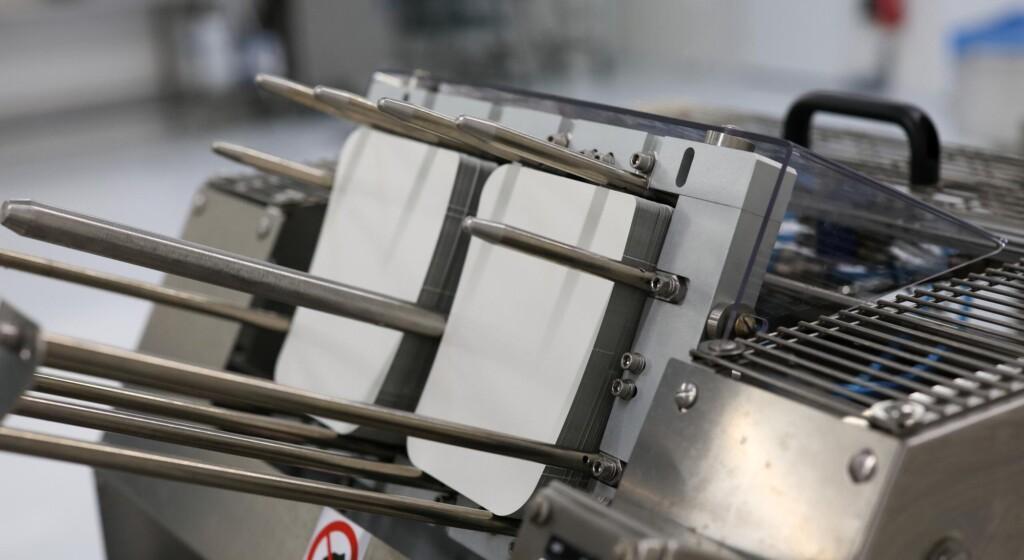
Key Takeaways
Automatic dosing systems are essential for efficient, precise, and hygienic production. They ensure consistent portioning of multi-component meals while reducing waste and improving operational efficiency.
Selecting the right system requires considering ingredient compatibility, tray handling integration, dosing accuracy, and production scalability. A well-chosen system minimizes human error, enhances product quality, and meets strict food safety regulations like HACCP and ISO 22000.
For long-term success, implementing an automatic dosing system depends not only on best practices but also on choosing a system designed to handle the unique demands of your food production. From ensuring precise portioning of multi-component meals to integrating seamlessly with tray packaging, the right solution must support efficiency, hygiene, and scalability.
For manufacturers looking for a reliable, high-performance dosing solution, Kometos Finntray offers automated dosing and food packaging systems tailored for various ready meal components. Our systems ensure consistent portioning, smooth tray handling, and compliance with strict food safety standards.
Learn more about Kometos’ offering to explore how we can enhance your production process.
FAQ
How does a dosing system work?
A dosing system measures and dispenses precise amounts of ingredients into trays during production. Sensors monitor portion accuracy, while automated pumps or dispensers control the flow of solids and semi-liquids. The system integrates with tray handling and packaging lines to maintain efficiency and consistency.
What is the dosing control system?
A dosing control system is the automation unit that regulates portioning accuracy. It uses PLC-based controls, sensors, and pre-programmed recipes to adjust dosing parameters in real-time. This ensures each meal receives the correct amount of ingredients while reducing waste, improving efficiency, and maintaining product quality.
What is an automatic dosing system?
An automatic dosing system is a fully automated solution that precisely portions and dispenses food ingredients in ready meal production. It eliminates manual dosing, ensures consistency, and integrates with packaging lines to enhance efficiency. These systems handle multi-component meals like pasta, rice, vegetables, and sauces while maintaining hygiene and food safety standards.
Is auto dosing worth it?
Yes, auto dosing improves accuracy, reduces waste, and enhances production efficiency. It ensures consistent portioning, speeds up processing, and minimizes manual labor. For food manufacturers, automation leads to higher output, lower costs, and compliance with hygiene regulations, making it a valuable investment for scalable and high-quality food production.

